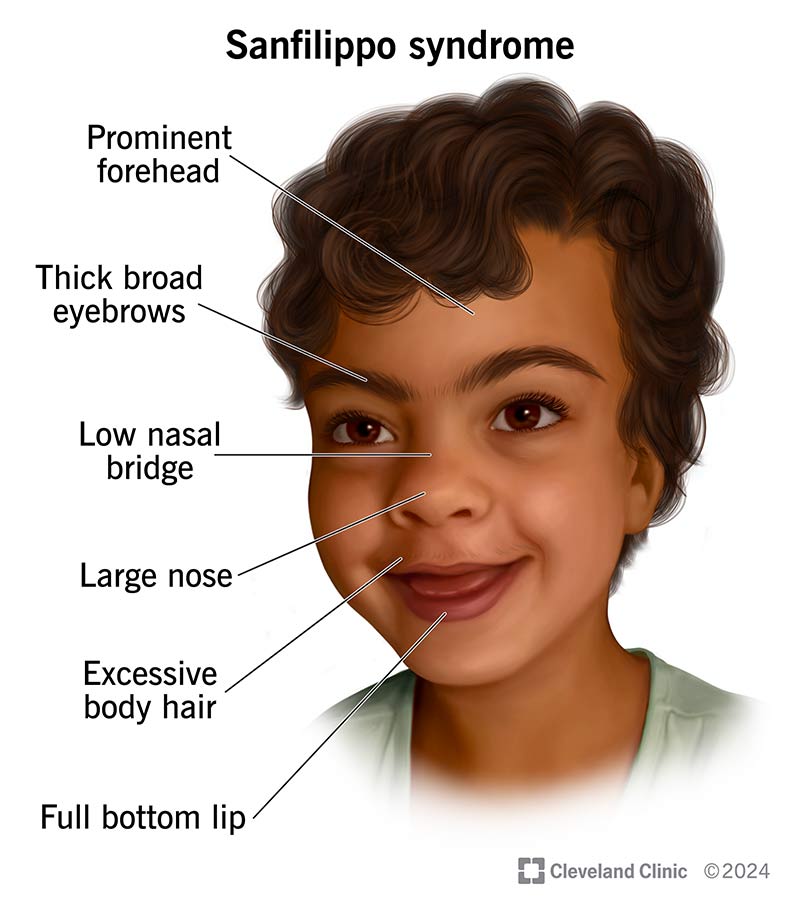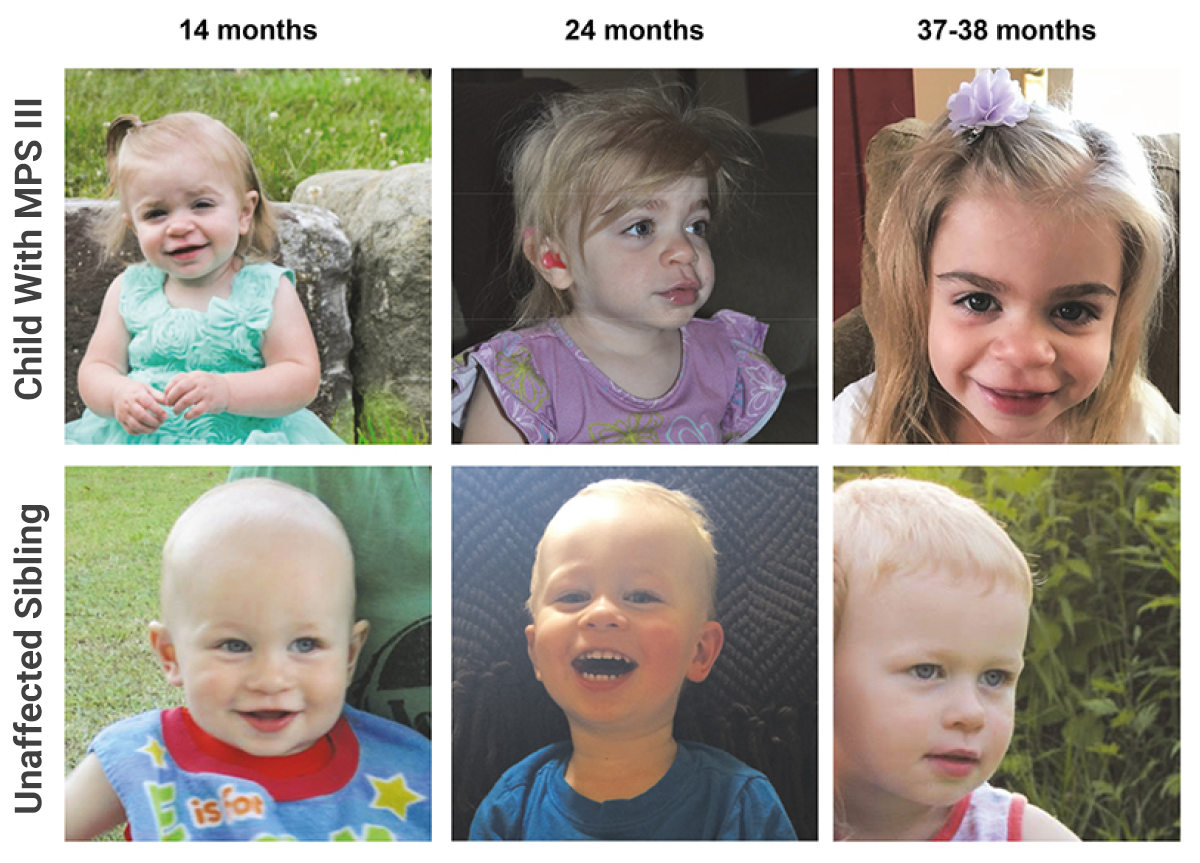Sanfilippo syndrome, a rare genetic disorder, has been under the radar for many, but its unique facial features set it apart in the world of medical conditions. It’s not just about understanding the condition; it’s about recognizing the subtle yet defining characteristics that make diagnosing Sanfilippo syndrome crucial. Let’s delve into the world of Sanfilippo syndrome, exploring what makes it unique and why understanding its facial features is essential for early detection and treatment.
Imagine a world where a single glance can tell you so much about a person's health. For those familiar with Sanfilippo syndrome, this is not just a world of imagination but a reality. The syndrome, also known as mucopolysaccharidosis type III (MPS III), is more than just a medical condition; it's a journey of discovery and understanding. The distinct facial features associated with Sanfilippo syndrome play a pivotal role in early diagnosis, making them an essential aspect of medical awareness.
This article aims to shed light on the lesser-known aspects of Sanfilippo syndrome, particularly focusing on its facial features. By exploring the nuances of these characteristics, we hope to empower you with knowledge that could make a significant difference in the lives of those affected by this condition. So, let's embark on this enlightening journey together.
Read also:Mac Millers Birthday Celebration A Tribute To His Life And Legacy
Understanding Sanfilippo Syndrome
What is Sanfilippo Syndrome?
Sanfilippo syndrome is a genetic disorder that falls under the category of mucopolysaccharidoses, a group of metabolic disorders caused by the absence or malfunctioning of specific enzymes needed to break down complex sugar molecules called glycosaminoglycans (GAGs). In the case of Sanfilippo syndrome, the body fails to produce enough of the enzyme needed to break down a particular type of GAG, heparan sulfate. This accumulation leads to progressive damage to cells, particularly in the central nervous system.
There are four types of Sanfilippo syndrome, each linked to a deficiency in a different enzyme. These types are categorized as Type A, B, C, and D, depending on which enzyme is missing or not functioning correctly. Despite the differences in enzyme deficiency, the symptoms and progression of the disease are generally similar across all types.
Common Symptoms and Progression
The symptoms of Sanfilippo syndrome typically begin to appear in early childhood, usually between the ages of 2 and 6. Initial signs may include developmental delays, hyperactivity, sleep disturbances, and behavioral problems. As the disease progresses, children may experience loss of previously acquired skills, difficulty walking, and speech impairment. The condition is progressive, and most individuals with Sanfilippo syndrome have a significantly shortened lifespan, often not surviving beyond their teenage years.
The progression of Sanfilippo syndrome is divided into four stages:
- Stage 1: Behavioral and developmental issues become apparent.
- Stage 2: Neurological symptoms worsen, and cognitive decline becomes more evident.
- Stage 3: Loss of mobility and communication skills occurs.
- Stage 4: Severe physical disability and dependence on caregivers.
Sanfilippo Syndrome Facial Features
Distinctive Characteristics
One of the most striking aspects of Sanfilippo syndrome is the unique set of facial features associated with it. These features are not just cosmetic; they serve as important diagnostic markers for healthcare professionals. The facial characteristics of individuals with Sanfilippo syndrome can vary, but some common traits include:
- Coarse facial features: This includes a broad nose, thick lips, and a protruding tongue.
- Enlarged head size: Also known as macrocephaly, this feature is often one of the first noticeable signs.
- Thick eyebrows: Often meeting in the middle, creating a unibrow appearance.
- Flattened nasal bridge: Contributing to the coarse appearance of the face.
These features develop over time and become more pronounced as the disease progresses. Recognizing these early signs can lead to earlier diagnosis and intervention, which is crucial for managing the condition effectively.
Read also:What Is Secure Shell Ssh In The Iot Network Windows Your Ultimate Guide
Importance in Diagnosis
Facial features play a crucial role in the early diagnosis of Sanfilippo syndrome. For healthcare providers, identifying these distinctive characteristics can be the first step in initiating further diagnostic testing. Genetic testing and enzyme assays are typically required to confirm a diagnosis, but the presence of these facial features can guide healthcare professionals in the right direction.
Early diagnosis is vital for initiating appropriate management strategies, including enzyme replacement therapy, gene therapy, and supportive care. By understanding the significance of these facial features, we can improve the quality of life for individuals with Sanfilippo syndrome and their families.
The Genetic Basis of Sanfilippo Syndrome
How It’s Inherited
Sanfilippo syndrome is inherited in an autosomal recessive pattern, meaning both parents must pass on the defective gene for a child to be affected. Each parent carries one copy of the mutated gene but typically does not show signs or symptoms of the condition. If both parents are carriers, there is a 25% chance with each pregnancy that the child will inherit two copies of the mutated gene and develop Sanfilippo syndrome.
Understanding the genetic basis of Sanfilippo syndrome is crucial for genetic counseling and family planning. Families with a history of the condition can benefit from genetic testing to determine carrier status and assess the risk of passing the condition to future generations.
Types and Enzyme Deficiencies
As mentioned earlier, Sanfilippo syndrome is categorized into four types based on the specific enzyme deficiency:
- Type A: Deficiency in the enzyme sulfamidase.
- Type B: Deficiency in the enzyme N-acetylglucosaminidase.
- Type C: Deficiency in the enzyme acetyl-CoA:alpha-glucosaminide acetyltransferase.
- Type D: Deficiency in the enzyme N-acetylglucosamine 6-sulfatase.
Each type has its own set of challenges and considerations, but the overall impact on the body and the presence of facial features remain consistent across all types.
Diagnosis and Testing
Initial Evaluation
Diagnosing Sanfilippo syndrome begins with a thorough evaluation of the individual's medical history, physical examination, and observation of facial features. Healthcare providers may notice the distinctive coarse features during a routine check-up or when parents express concerns about developmental delays or behavioral issues in their child.
Once Sanfilippo syndrome is suspected based on clinical features, further diagnostic testing is necessary to confirm the diagnosis. This typically involves:
- Urine tests: To detect elevated levels of heparan sulfate.
- Enzyme assays: To measure the activity of specific enzymes in blood or skin cells.
- Genetic testing: To identify mutations in the genes responsible for enzyme production.
Advanced Diagnostic Techniques
Recent advancements in diagnostic technology have improved the accuracy and speed of diagnosing Sanfilippo syndrome. Techniques such as next-generation sequencing (NGS) allow for comprehensive genetic analysis, identifying mutations that may not be detected through traditional methods. Early and accurate diagnosis is essential for initiating appropriate treatment and management strategies.
Treatment and Management
Current Treatment Options
While there is currently no cure for Sanfilippo syndrome, several treatment options are available to manage symptoms and improve quality of life. These include:
- Enzyme replacement therapy: Replacing the missing or defective enzyme to break down accumulated GAGs.
- Gene therapy: Introducing a functional copy of the defective gene into the body to restore enzyme activity.
- Supportive care: Addressing specific symptoms with physical therapy, speech therapy, and occupational therapy.
Research into new treatments is ongoing, with promising developments in areas such as substrate reduction therapy and stem cell therapy. These advancements offer hope for improved outcomes and potentially longer lifespans for individuals with Sanfilippo syndrome.
Future Directions in Treatment
As our understanding of Sanfilippo syndrome continues to grow, so too does the potential for innovative treatments. Clinical trials are exploring the efficacy of various therapies, including those targeting the central nervous system where much of the damage occurs. Collaborative efforts between researchers, clinicians, and families are essential for advancing treatment options and improving the lives of those affected by this condition.
Living with Sanfilippo Syndrome
Challenges and Coping Strategies
Living with Sanfilippo syndrome presents numerous challenges for both individuals and their families. The progressive nature of the disease requires ongoing adaptation and support. Families often face emotional, financial, and logistical hurdles as they navigate the complexities of caring for a child with special needs.
Coping strategies may include:
- Building a strong support network of family, friends, and healthcare professionals.
- Seeking out support groups and communities for individuals and families affected by Sanfilippo syndrome.
- Utilizing available resources, such as financial assistance programs and respite care services.
Quality of Life Considerations
Enhancing the quality of life for individuals with Sanfilippo syndrome is a top priority. This involves not only managing physical symptoms but also addressing emotional and social needs. Creating a nurturing environment that encourages independence and self-expression can make a significant difference in the lives of those affected by this condition.
Community and Support
Advocacy and Awareness
Raising awareness about Sanfilippo syndrome is crucial for promoting understanding and support within the community. Advocacy efforts can lead to increased funding for research, improved access to treatment, and enhanced support services for families. Organizations dedicated to Sanfilippo syndrome play a vital role in these efforts, providing resources and a platform for voices to be heard.
Support Networks
Connecting with others who understand the unique challenges of living with Sanfilippo syndrome can be incredibly beneficial. Support networks offer a safe space to share experiences, exchange advice, and find comfort in knowing you're not alone. Whether through online forums, local meetups, or national conferences, these networks provide invaluable support for individuals and families affected by this condition.
Conclusion
In conclusion, understanding the facial features associated with Sanfilippo syndrome is crucial for early diagnosis and effective management of the condition. By recognizing the distinctive characteristics and their significance, healthcare providers and families can take proactive steps to address the challenges posed by this rare genetic disorder. Advances in research and treatment offer hope for improved outcomes and a better quality of life for those affected by Sanfilippo syndrome.
We encourage you to share this article with others who may benefit from the information provided. Together, we can raise awareness and support the Sanfilippo syndrome community. For more insights and updates on this condition, be sure to explore other articles on our site.
Table of Contents


